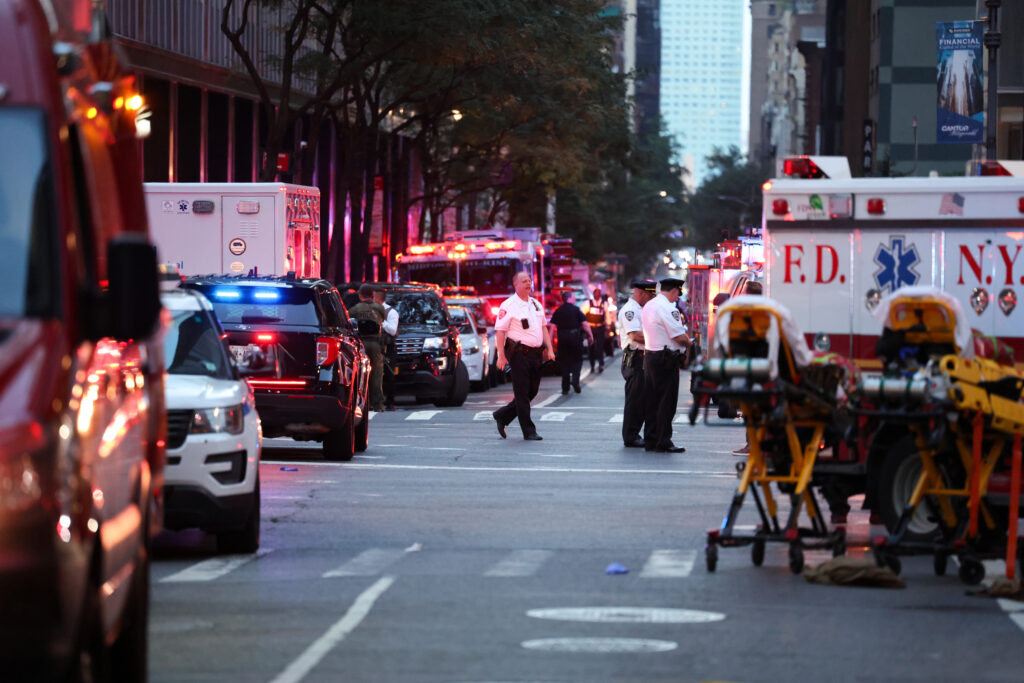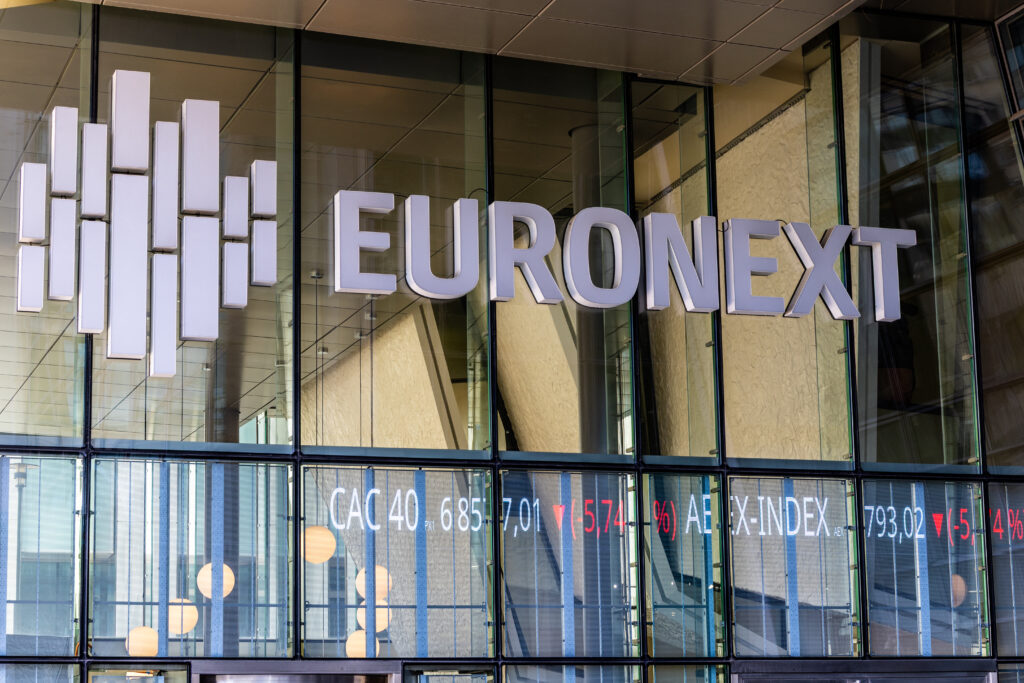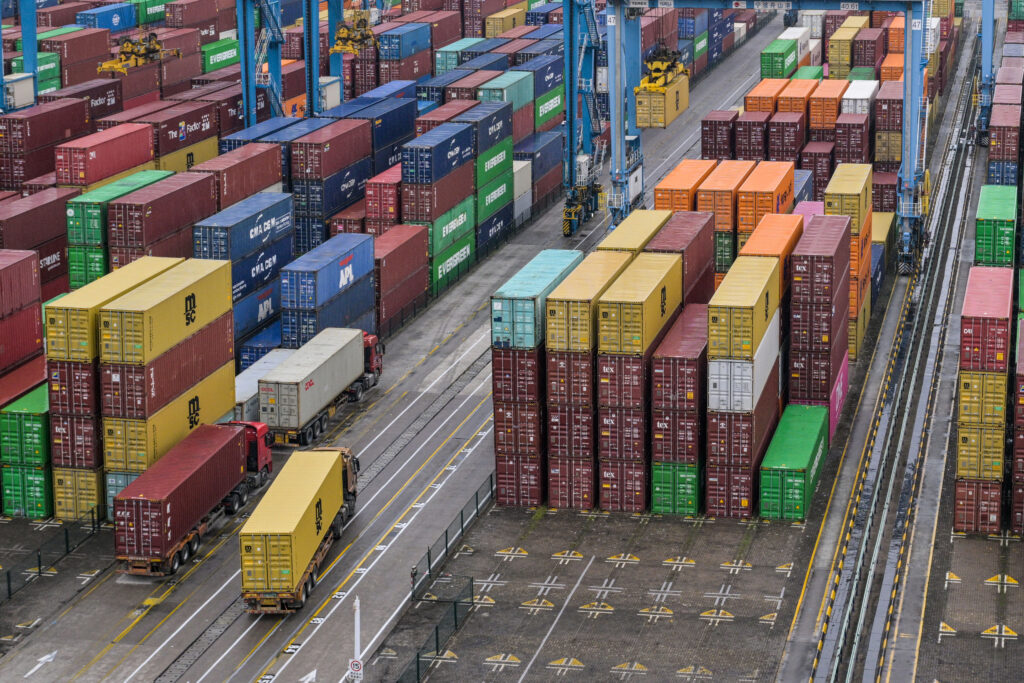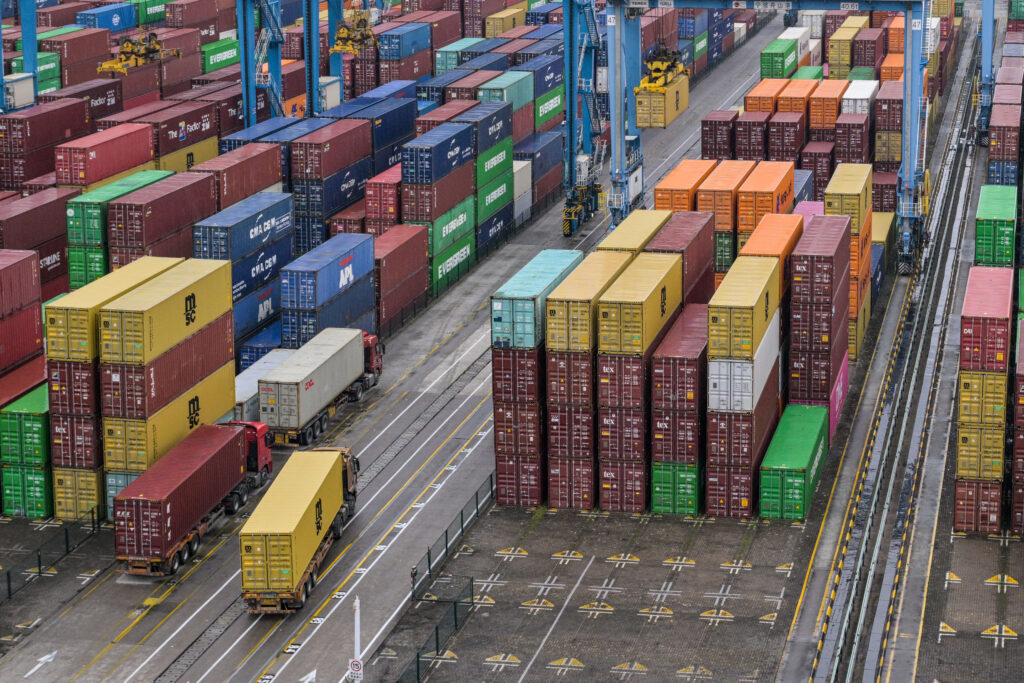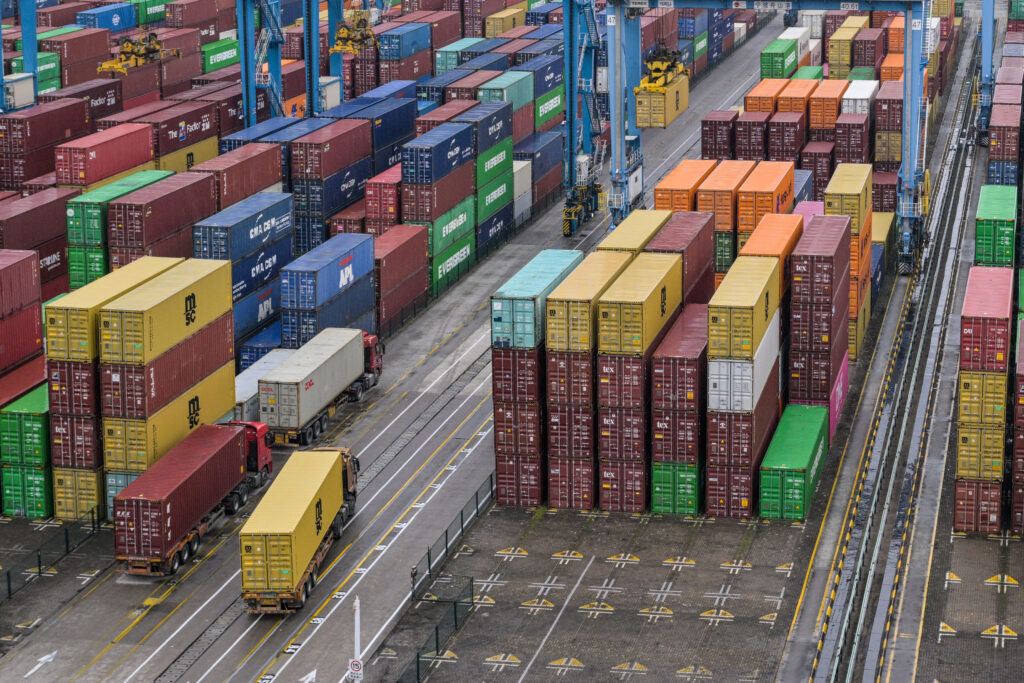Gunman kills four in New York skyscraper shooting spree
A gunman with mental health issues opened fire in a central Manhattan skyscraper on Monday, killing four people including a policeman before apparently taking his own life, officials said.A fifth victim was in critical condition after being shot, Mayor Eric Adams told a late-night press briefing at a nearby hospital.The gunman was caught on surveillance footage leaving a black BMW and carrying an M-4 rifle, police commissioner Jessica Tisch told the news conference.On entering the building, he immediately opened fire on a police officer before “spraying the lobby” with bullets, she said.The gunman then took an elevator to the 33rd floor of Rudin Management, which owns the building, and continued his spree before apparently shooting himself. He was later discovered by officers next to his weapon.The office tower block at 345 Park Avenue — home to the National Football League, hedge fund giant Blackstone, and auditor KPMG — was apparently targeted by the gunman, who is believed to have acted alone, Tisch said.The police commissioner identified the shooter as Shane Tamura from Las Vegas and said a revolver, ammunition and magazines were found in his vehicle.Tamura had a history of mental health issues, she said.The incident began around 6:00 pm (2200 GMT) when reports of gunfire prompted hundreds of police to swarm a busy office district on Park Avenue, an area popular with tourists and businesspeople.A worker from a nearby office building wept as she left the area after a local lockdown was lifted.- ‘ Senseless’ -Another office worker described the gunman going floor-to-floor as staff prepared to leave for the day.”We lost four souls to another act of senseless violence,” the city’s mayor said, excluding the shooter, who died by an apparently self-inflicted gunshot.Adams said the fallen police officer was a 36-year-old immigrant from Bangladesh.Two other males and a female died and another man remained in a critical condition, officials said without giving any preliminary motive for the shootings.An NFL employee was stable after being “seriously injured” in the attack, ESPN reported, quoting an internal memo from league commissioner Roger Goodell.CNN and NBC cited unnamed officials as saying the shooter had a grievance with the NFL and its handling of CTE, a brain condition linked to head trauma.The gunman had a note in his pocket saying he suffered from CTE, the news channels said, quoting a source with knowledge of the investigation.Office worker Shad Sakib told AFP that he was packing his things to leave work when a public address announcement warned him and his colleagues to shelter in place.”Everyone was confused with like, ‘wait, what’s going on?’ And then someone finally realized that it’s online, that someone walked in with a machine gun,” the witness said.- ‘Floor by floor’ -“He walked right into a building right next door. We saw the photo of him walking through the same area that I walked through to get lunch here.”You would think it won’t happen to you, and then it does.”Another witness, a woman who declined to give her name as she left the vicinity of the shooting, told AFP: “I was in the building. He went floor by floor.” A second woman wept as she left the scene. There have been 254 mass shootings in the United States this year including Monday’s incident in New York, according to the Gun Violence Archive — which defines a mass shooting as four or more people shot.Police deployed a drone near Park Avenue at the height of the evening rush hour as dozens of officers swarmed the area, some carrying long guns and others wearing ballistic vests.Police repeatedly pushed back journalists and members of the public who gathered to see what was happening in the normally calm but busy area of Midtown Manhattan.The area is home to several five-star business hotels, as well as a number of corporate headquarters and financial and law firms. The United Nations headquarters is nearby.New York Governor Kathy Hochul said she has been briefed on the shooting.Zohran Mamdani, the frontrunner in the forthcoming New York mayoral race, wrote on social media that he was “heartbroken to learn of the horrific shooting in midtown and I am holding the victims, their families, and the NYPD officer… in my thoughts.”
Trump inaugurates golf course to end eventful Scottish stay
Donald Trump inaugurated his new golf course in eastern Scotland on Tuesday, ending a five-day trip in which the US president signed a major trade deal and weighed in on several key issues.Secret agents and golfers criss-crossed the sprawling complex on the Aberdeenshire coast, waiting for the president to tee off.But the Republican president, a keen golfer, let his son Eric officially open the course, having transferred his real estate and assets to a family holding company.The new course features the world’s largest natural bunker, dunes and greens overlooking the sea, with a “focus on environmental sensitivity”, said a press release.Visible out to sea were the offshore wind turbines that Trump unsuccessfully tried to block.The president once again spoke out against wind power as he hosted European Union President Ursula von der Leyen on Sunday and UK Prime Minister Keir Starmer on Monday.It was one of the many issues Trump addressed during the free-wheeling press conferences at his other golf complex in Turnberry, western Scotland over the past days.With Von der Leyen, he announced a trade agreement in which the EU resigned itself to 15 percent tariffs on goods entering the US, a deal heavily criticised across the continent. During Monday’s press conference with Starmer, Trump promised more aid for Gaza, gave Russian President Vladimir Putin a “10 or 12 day” ultimatum to cease hostilities in Ukraine and criticised London mayor Sadiq Khan.The US leader further waded into UK politics on Tuesday morning when he took to his Truth Social platform to urge the government to cut taxes and incentivise drilling in the North Sea oilfield.”Incentivize the drillers, FAST. A VAST FORTUNE TO BE MADE for the UK, and far lower energy costs for the people,” he wrote.Trump played golf at Turnberry on Saturday and Sunday on a visit that mixed leisure with diplomacy, further blurring the lines between the presidency and his business interests.
Un tireur tue au moins quatre personnes à New York avant d’être retrouvé mort
Un homme armé a semé la terreur lundi soir dans un gratte-ciel du centre de New York, tuant au moins quatre personnes dont un policier avant de vraisemblablement se donner la mort, a indiqué le maire de la ville.”Nous avons perdu quatre âmes dans un nouvel acte de violence insensée”, a regretté Eric Adams lors d’une conférence de presse tard dans la soirée, ne comptant pas le tireur qui a apparemment retourné son arme contre lui.Trois hommes dont un policier, ainsi qu’une femme, ont été tués, tandis qu’un autre individu se trouve dans un état critique, ont précisé des responsables, sans évoquer un possible mobile à ce stade.Les secours ont été appelés lundi vers 18H00 (22H00 GMT) dans le quartier d’affaires de Midtown Manhattan.Les caméras de surveillance ont filmé un homme descendant d’une voiture noire, armé d’un fusil d’assaut M-4. Il est ensuite entré dans le bâtiment et a immédiatement tiré sur le policier avant d'”arroser le hall” de balles, a relaté la cheffe de la police new-yorkaise, Jessica Tisch.L’assaillant avait visiblement décidé de prendre pour cible le 345, Park Avenue, grand immeuble de bureaux qui abrite des locaux de la Ligue professionnelle de football américain (NFL), du géant de la finance Blackstone et du cabinet de conseil et d’audit KPMG, selon Mme Tisch.Elle a dit penser que le suspect, originaire de Las Vegas et qui présentait des antécédents de problèmes psychiatriques, avait agi seul.Plusieurs médias, dont CNN et le New York Post, montrent une photographie d’un homme moustachu marchant seul dans la rue avec un long fusil dans la main droite, vêtu de lunettes de soleil et d’une veste sombre.Rapidement, des centaines de policiers, certains portant gilets pare-balles et armes lourdes, et de très nombreuses ambulances, sont arrivés sur les lieux, a constaté un journaliste de l’AFP.- “D’un étage à l’autre” -“J’étais dans le bâtiment, il allait d’un étage à l’autre”, a confié à l’AFP, près de là, une témoin qui a refusé de donner son nom.Selon le New York Times, le tireur est mort au 33e étage.Shad Sakib travaillait dans un bâtiment à proximité quand il lui a été ordonné de se confiner à l’intérieur.”Tout le monde se demandait ce qu’il se passait, jusqu’à ce que quelqu’un dise que c’est en ligne, que quelqu’un est rentré avec une mitraillette”, a-t-il dit à l’AFP. “Il est rentré dans le bâtiment juste à côté. On a vu une photo de lui marchant là même où je passe pour aller chercher à déjeuner”, a ajouté ce témoin.Des hélicoptères survolaient ce quartier d’hôtels luxueux et de sièges de grandes entreprises situé à quelques encablures de Central Park.Le candidat de gauche à la mairie de New York, Zohran Mamdani, s’est dit “déchiré” par la nouvelle.- Un assassinat en décembre -Avec plus d’armes à feu en circulation que d’habitants, les Etats-Unis affichent le taux de mortalité par arme à feu le plus élevé de tous les pays développés.Les fusillades sont un fléau récurrent que les gouvernements successifs n’ont jusqu’à présent pas réussi à endiguer, de nombreux Américains restant très attachés à leurs armes.En 2024, plus de 16.000 personnes, sans compter les suicides, ont été tuées par arme à feu, selon l’ONG Gun Violence Archive.En décembre dernier, Brian Thompson, le patron du plus gros assureur santé du pays, UnitedHealthcare, a été assassiné en pleine rue dans ce même quartier de Midtown Manhattan. Luigi Mangione, un jeune ingénieur informatique, a été arrêté et inculpé dans cette affaire. En avril, il a plaidé non coupable d’homicide devant un tribunal fédéral de Manhattan.
Les Bourses européennes ouvrent dans le vert
Les Bourses européennes ont ouvert en terrain positif mardi, mais sans grand entrain, l’enthousiasme suscité par l’accord commercial entre l’Union européenne et les Etats-Unis s’estompant face aux incertitudes persistantes.Dans les premiers échanges, la Bourse de Paris prenait 0,47%, Francfort 0,48%, Londres 0,07% et Milan 0,27%.
Commerce: Chinois et Américains se retrouvent pour une 2e journée de négociations à Stockholm
Responsables chinois et américains se sont retrouvés mardi à Stockholm pour une deuxième journée de négociations sur les droits de douane réciproques entre les deux pays, avec pour objectif phare une prolongation de la trêve tarifaire obtenue à Genève en mai.Des journalistes de l’AFP ont vu les délégations américaine et chinoise, menées respectivement par le secrétaire au Trésor Scott Bessent et le vice-premier ministre He Lifeng, entrer sous un ciel gris dans le lieu où se déroulent les pourparlers: le bâtiment de Rosenbad qui abrite le cabinet du Premier ministre suédois.Aucune information n’a été communiquée sur le contenu des discussions qui se tiennent depuis lundi dans la capitale suédoise.Pékin a dit espérer qu’elles se tiendront dans un esprit “de respect mutuel et de réciprocité”.La Chine entend “réduire les malentendus, renforcer la coopération et promouvoir un développement stable, sain et durable des relations sino-américaines”, a déclaré un porte-parole du ministère des Affaires étrangères, Guo Jiakun, lundi lors d’une conférence de presse à Pékin.Les discussions à Stockholm visent à prolonger la pause de 90 jours négociée en mai à Genève, qui avait mis fin aux représailles des deux côtés du Pacifique à l’origine de surtaxes prohibitives.Cela avait permis de ramener les droits de douane sur les produits américains et chinois, respectivement à 125% et 145%, à un niveau plus modeste de 10% et 30%, qui viennent s’ajouter à ceux déjà existants, sur un certain nombre de produits, avant le retour de Donald Trump à la Maison Blanche, fin janvier.Les pourparlers en Suède ont lieu au début d’une semaine décisive pour la politique commerciale du président Donald Trump, les droits de douane appliqués à la plupart des principaux partenaires commerciaux des Etats-Unis devant connaître une brusque hausse le 1er août.Face à cette échéance imminente, plusieurs pays se précipitent pour conclure un accord avec Washington. Dimanche, le président américain Donald Trump et la présidente de la Commission européenne Ursula von der Leyen ont annoncé en Ecosse un accord douanier prévoyant que les produits européens exportés aux Etats-Unis soient taxés à 15%.A Paris, si on concède que cet accord va apporter de la “stabilité” aux entreprises, on insiste surtout sur son caractère “déséquilibré”, selon les termes utilisés par plusieurs membres du gouvernement.
Commerce: Chinois et Américains se retrouvent pour une 2e journée de négociations à Stockholm
Responsables chinois et américains se sont retrouvés mardi à Stockholm pour une deuxième journée de négociations sur les droits de douane réciproques entre les deux pays, avec pour objectif phare une prolongation de la trêve tarifaire obtenue à Genève en mai.Des journalistes de l’AFP ont vu les délégations américaine et chinoise, menées respectivement par le secrétaire au Trésor Scott Bessent et le vice-premier ministre He Lifeng, entrer sous un ciel gris dans le lieu où se déroulent les pourparlers: le bâtiment de Rosenbad qui abrite le cabinet du Premier ministre suédois.Aucune information n’a été communiquée sur le contenu des discussions qui se tiennent depuis lundi dans la capitale suédoise.Pékin a dit espérer qu’elles se tiendront dans un esprit “de respect mutuel et de réciprocité”.La Chine entend “réduire les malentendus, renforcer la coopération et promouvoir un développement stable, sain et durable des relations sino-américaines”, a déclaré un porte-parole du ministère des Affaires étrangères, Guo Jiakun, lundi lors d’une conférence de presse à Pékin.Les discussions à Stockholm visent à prolonger la pause de 90 jours négociée en mai à Genève, qui avait mis fin aux représailles des deux côtés du Pacifique à l’origine de surtaxes prohibitives.Cela avait permis de ramener les droits de douane sur les produits américains et chinois, respectivement à 125% et 145%, à un niveau plus modeste de 10% et 30%, qui viennent s’ajouter à ceux déjà existants, sur un certain nombre de produits, avant le retour de Donald Trump à la Maison Blanche, fin janvier.Les pourparlers en Suède ont lieu au début d’une semaine décisive pour la politique commerciale du président Donald Trump, les droits de douane appliqués à la plupart des principaux partenaires commerciaux des Etats-Unis devant connaître une brusque hausse le 1er août.Face à cette échéance imminente, plusieurs pays se précipitent pour conclure un accord avec Washington. Dimanche, le président américain Donald Trump et la présidente de la Commission européenne Ursula von der Leyen ont annoncé en Ecosse un accord douanier prévoyant que les produits européens exportés aux Etats-Unis soient taxés à 15%.A Paris, si on concède que cet accord va apporter de la “stabilité” aux entreprises, on insiste surtout sur son caractère “déséquilibré”, selon les termes utilisés par plusieurs membres du gouvernement.
Commerce: Chinois et Américains se retrouvent pour une 2e journée de négociations à Stockholm
Responsables chinois et américains se sont retrouvés mardi à Stockholm pour une deuxième journée de négociations sur les droits de douane réciproques entre les deux pays, avec pour objectif phare une prolongation de la trêve tarifaire obtenue à Genève en mai.Des journalistes de l’AFP ont vu les délégations américaine et chinoise, menées respectivement par le secrétaire au Trésor Scott Bessent et le vice-premier ministre He Lifeng, entrer sous un ciel gris dans le lieu où se déroulent les pourparlers: le bâtiment de Rosenbad qui abrite le cabinet du Premier ministre suédois.Aucune information n’a été communiquée sur le contenu des discussions qui se tiennent depuis lundi dans la capitale suédoise.Pékin a dit espérer qu’elles se tiendront dans un esprit “de respect mutuel et de réciprocité”.La Chine entend “réduire les malentendus, renforcer la coopération et promouvoir un développement stable, sain et durable des relations sino-américaines”, a déclaré un porte-parole du ministère des Affaires étrangères, Guo Jiakun, lundi lors d’une conférence de presse à Pékin.Les discussions à Stockholm visent à prolonger la pause de 90 jours négociée en mai à Genève, qui avait mis fin aux représailles des deux côtés du Pacifique à l’origine de surtaxes prohibitives.Cela avait permis de ramener les droits de douane sur les produits américains et chinois, respectivement à 125% et 145%, à un niveau plus modeste de 10% et 30%, qui viennent s’ajouter à ceux déjà existants, sur un certain nombre de produits, avant le retour de Donald Trump à la Maison Blanche, fin janvier.Les pourparlers en Suède ont lieu au début d’une semaine décisive pour la politique commerciale du président Donald Trump, les droits de douane appliqués à la plupart des principaux partenaires commerciaux des Etats-Unis devant connaître une brusque hausse le 1er août.Face à cette échéance imminente, plusieurs pays se précipitent pour conclure un accord avec Washington. Dimanche, le président américain Donald Trump et la présidente de la Commission européenne Ursula von der Leyen ont annoncé en Ecosse un accord douanier prévoyant que les produits européens exportés aux Etats-Unis soient taxés à 15%.A Paris, si on concède que cet accord va apporter de la “stabilité” aux entreprises, on insiste surtout sur son caractère “déséquilibré”, selon les termes utilisés par plusieurs membres du gouvernement.


